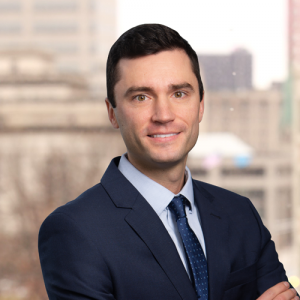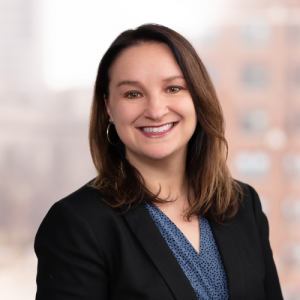On July 6, 2016, the Centers for Medicare & Medicaid Services (“CMS”) issued its much anticipated proposed rule for the CY 2017 Hospital Outpatient Prospective Payment System (“Proposed Rule”). Among many other changes, the Proposed Rule addressed the implementation of Section 603 of the Bipartisan Budget Act of 2015 (“Section 603”), which excludes many off-campus services from being paid as hospital services under the hospital outpatient prospective payment system (“OPPS”) as of January 1, 2017. CMS’s proposals to implement Section 603 leave hospitals with little ability to expand or move off-campus locations/services. In addition, the Proposed Rule raises unanswered questions and includes several topics for which CMS specifically requested comments. Hospital providers should consider commenting on the Proposed Rule and encourage flexibility in Section 603 implementation.
Background
Section 603 amended Social Security Act Section 1833(t) to exclude from Medicare’s OPPS any services (except for items and services furnished by a dedicated emergency department) furnished at an off-campus outpatient department of a hospital beginning January 1, 2017. This provision applies to off-campus hospital departments, as defined in 42 C.F.R. §413.65(a)(2) (the Medicare “provider-based rule”), that did not bill for services under the OPPS prior to November 2, 2015. “Off-campus” is defined as the physical area that is located more than 250 yards from the main hospital campus building or a remote location of the hospital. It is important to note that on-campus hospital departments, departments of critical access hospitals (whether on or off campus) and provider-based rural health clinics will not be affected by the OPPS coverage exclusion. Section 603 does, however, apply to outpatient services of other excluded hospitals (e.g., long-term care, rehabilitation, psychiatric and children’s hospitals).
Section 603 effectively grandfathers any off-campus departments of a hospital that billed Medicare under the OPPS prior to November 2, 2015. However, if a hospital first bills for services at an off-campus department on or after November 2, 2015, the services will be paid under the OPPS through December 31, 2016. Beginning January 1, 2017, services at those locations will be paid under other applicable payment systems.
CMS Proposals
To implement Section 603, CMS proposed the following.
- “Excepted” Items and Services. CMS proposed that certain off-campus provider-based departments (“PBDs”) will be permitted to continue to bill for “excepted” items and services under the OPPS. Excepted items and services are:
- All items and services furnished in a dedicated emergency department (as defined in 42 C.F.R. § 489.24), including non-emergency services;
- Items and services that were furnished and billed by an off-campus PBD prior to November 2, 2015; and
- Items and services furnished in a hospital department within 250 yards of a remote location of the hospital. Note, CMS urged hospitals to use surveyor reports or other appropriate documentation to ensure their off-campus provider-based departments are within 250 yards (straight-line) from any point of a remote location for this purpose.
- Service Expansions in Excepted Off-Campus PBDs. CMS stated that it believes that Section 603 applies to excepted facilities “as they existed at the time of enactment and only excepts those items and services that were being furnished and billed by off-campus PBDs prior to November 2, 2015.” Accordingly, CMS proposed that off-campus PBDs may continue to be paid at OPPS rates for items and services in the “clinical families of services” that were furnished and billed as of November 2, 2015. CMS proposed creating 19 “clinical families of services,” which are defined by APC and HCPCS code. However, services beyond those clinical families of services will not be excepted services (i.e., not payable under the OPPS). CMS is not proposing to limit the volume of excepted services at a location.
- Relocation of Excepted Off-Campus PBDs. CMS proposed that excepted off-campus PBDs will lose their excepted status if it changes location, i.e., moves or relocates from the physical address that was listed on the provider’s hospital enrollment form as of November 1, 2015. In the case of addresses with multiple units (multi-office building), the unit number is considered a part of the address. Therefore, an excepted hospital PBD could not purchase and expand into other units in the building and retain its excepted status.
- Changes of Ownership of Excepted PBDs. CMS proposed that if a hospital has a change of ownership, the off-campus PBD may maintain its excepted status only if the new owners accept the existing Medicare provider agreement from the prior owner. However, individual off-campus PBDs cannot be transferred from one hospital to another and maintain excepted status.
- Applicable Payment System. For CY 2017, CMS proposed the Medicare Physician Fee Schedule (“MPFS”) to be the “applicable payment system” for the majority of non-excepted items and services furnished in an off-campus PBD. Physicians furnishing such services will be paid based on the non-facility payment rate under the MPFS. Note that the physicians bill and are paid for the services, not the hospital, which means that the some type of arrangement between the physicians and the hospital will be necessary and must comply with Medicare laws and regulations. Although CMS did not specify, presumably the physician would bill using place of service code 11. This payment proposal will be a one-year transitional period while CMS continues to explore operational changes that would allow an off-campus PBD to bill Medicare for its services under a Part B payment system other than the OPPS beginning in CY 2018. Alternatively, the hospital could enroll as another provider/supplier type, provided it meets all of the applicable Medicare requirements.
- Provider-Based Status of a Nonexcepted Facility. Importantly, CMS stated that Section 603 does not specify that nonexcepted facilities are no longer considered a part of the hospital. In addition, CMS proposed that nonexcepted facilities “would still be considered to be part of the hospital and that the hospital as a whole would continue to be required to meet all applicable conditions of participation and regulations governing its provider-based status, but, for payment purposes, the off-campus PBD would be considered a nonhospital setting…” Hospitals will need to consider the cost versus the benefits of provider-based status versus enrolling as another provider/supplier type.
CMS noted that it and its contractors will continue to conduct audits of hospital billing to ensure off-campus PBDs are billing under the proper billing system. Accordingly, CMS expects hospitals to maintain proper documentation showing what lines of service are provided at each off-campus PBD prior to November 2, 2015 and to make this documentation available to CMS and its contractors upon request.
Open Issues
There are a number of issues that CMS did not address in the Proposed Rule. These include the following.
- Facilities Under Development. Although many hospitals had off-campus outpatient departments that were under development when Section 603 was enacted, but had not yet billed for services under the OPPS, CMS did not address the treatment of these facilities in the Proposed Rule. Presumably, this means that CMS does not intend to extend any grandfathered status to these under development facilities. Separate legislation considers grandfathered status for “mid-build” facilities, but that legislation is currently stalled at the Senate.
- Enrollment of Nonexcepted Facilities. CMS did not address, and is soliciting comments on, how nonexcepted facilities should enroll. CMS even opened up the possibility of establishing a new provider/supplier type for nonexcepted facilities. As an alternative, CMS proposed that nonexcepted facilities could enroll in Medicare as another provider or supplier type (e.g., Ambulatory Surgery Center or physician group practice). This raises many regulatory and practical issues because CMS requires physical separateness for provider-based facilities and many other types of providers and suppliers. So enrolling as an alternate provider/supplier type at a site with excepted services could jeopardize not only the new enrollment status but also the provider-based status of the facility. Hospitals should also consider the impact on other Medicare payments, such as medical education, which were not addressed in the Proposed Rule.
- Billing and Payment at Nonexcepted Facilities. As stated above, CMS does not have a proposal as to how it will pay for nonexcepted services after 2017. CMS is soliciting comments on what changes will need to be made to the billing and payment system to allow a hospital to bill for nonexcepted services.
- Relocating Exception. CMS did open the possibility of having a limited exception to the prohibition on relocating facilities for circumstances beyond the hospital’s control. Hospitals should consider providing comments on the scope of this exception.
- Mergers and Other Hospital Acquisitions. CMS stated excepted status would only transfer if the main provider is also acquired and the new owners accept the existing Medicare provider agreement. However, CMS did not clearly state how it would treat an excepted PBD that was acquired by a merger or other acquisition where the main hospital became a part of another hospital. In this case, the acquired hospital would become a remote location of an existing hospital, and it is not possible to take assignment of the provider agreement.
- Services Not Covered Under Other Payment Systems. Section 603 states that effective January 1, 2017, nonexcepted services will be paid under another payment system. However, Section 603 and the Proposed Rule do not adequately address how services that are covered under the OPPS, but not under another system, will be paid. For example, certain surgical services are covered under the OPPS, but not the ASC Payment System. For partial hospitalization services, which are only paid under the OPPS, CMS stated that the hospital may choose to enroll a nonexcepted facility as a Community Mental Health Center (“CMHC”), and Medicare will pay for those services under the OPPS, provided it meets all of the Medicare requirements and Conditions of Participation. It seems unnecessarily burdensome to require a hospital to enroll as a CMHC if payment will be made under the OPPS anyway.
- Data Collection. CMS left open the possibility of requiring hospitals to report information on excepted facilities and services. Specifically, CMS is seeking comments on whether hospitals should be required to identify all excepted locations, the date that each excepted location began billing and the clinical families of services provided at the excepted location prior to November 2, 2015.
- Medical Education Payments. The Medicare medical education payment regulations allow hospitals to count resident time in a provider-based setting or, if certain conditions are met, time in a freestanding setting. While CMS did not address medical education payments in the Proposed Rule, CMS did confirm that if a nonexcepted facility continues to meet the provider-based requirements, it will be considered part of the hospital. Presumably, this means time spent in a nonexcepted provider-based facility would be counted the same as time in an ordinary provider-based department. If a hospital chooses to enroll a nonexcepted facility as a freestanding clinic location, it would need to demonstrate that it meets the requirements of 42 C.F.R. §413.78, including that the hospital incurred all of the salary and benefit costs for the residents in those settings.
- Provider-Based Denials and Overpayments. CMS did not address what impact a provider-based denial or overpayment issued on or after November 2, 2015 will have on a facility’s excepted status.
- 340B Eligibility – Patients and Child Sites. The 340B Drug Pricing Program relies in part on the provider-based status of an off-campus location when determining whether a patient is considered eligible to receive 340B-priced drugs and whether facility is considered a “child site” under the program. Among other requirements, costs associated with a site must be included in a reimbursable cost center on a hospital provider’s Medicare cost report in order to establish the required relationship with a patient and to register as a child site. In order to be reimbursable, the provider-based requirements must be met. Not surprisingly, the Proposed Rule does not mention the impact of these changes on 340B Program child site eligibility. How CMS implements the final rule and addresses the questions noted above will likely influence how and whether the Health Resources and Services Administration Office of Pharmacy Affairs adjusts its patient and child site eligibility criteria in the pending 340B Program Omnibus Guidance scheduled for publication towards the end of this year. As noted above, though, the complexities of implementing the Section 603 requirements will require a careful cost/benefit analysis that takes into account eligibility for 340B Program discounts in addition to the various other factors already noted.
Practical Takeaways
- Since there are numerous open questions as to implementation of Section 603, hospitals should take the initiative to help shape that guidance through commentary. Comments are due by September 6, 2016.
- CMS’s position on service expansions at excepted facilities is likely to be riddled with definitional issues, fraught with enforcement problems and create operational complexities (different coverage, participation and billing requirements at the same site). The resulting uncertainties will hamstring hospitals seeking to meet patient care needs. CMS’s position in the Proposed Rule is the exact opposite of its position in enforcing a similar off-campus grandfather rule that has applied to critical access hospitals since 2007. For the critical access hospital restrictions, CMS has considered the site/location (generally defined as street address) to be grandfathered and allowed critical access hospitals to add new services at the same site, expand the footprint and even replace aging facilities with entirely new structures.
- Hospitals should start planning for how they will bill for nonexcepted services after January 1, 2017. This may involve enrolling as another provider/supplier type and coordinating with physicians on the appropriate billing for nonexcepted services.
- Hospitals should review and maintain documentation for excepted facilities and services. This should include documentation that services were being billed as OPPS covered services at the site as of November 1, 2015, locations are listed on the CMS 855A as hospital locations, the types of services that were being billed under the OPPS, etc.
If you have questions or would like additional information about this topic, please contact:
- David Snow at (303) 801-3536 or dsnow@wp.hallrender.com;
- Lori Wink at (414) 721-0456 or lwink@wp.hallrender.com;
- Regan Tankersley at (317) 977-1445 or rtankersley@wp.hallrender.com;
- Joseph Krause at (414) 721-0906 or jkrause@wp.hallrender.com;
- Lisa Lucido at (248) 457-7812 or llucido@wp.hallrender.com; or
- Your regular Hall Render attorney.
Please visit the Hall Render Blog at http://blogs.hallrender.com/ or click here to sign up to receive Hall Render alerts on topics related to health care law.





